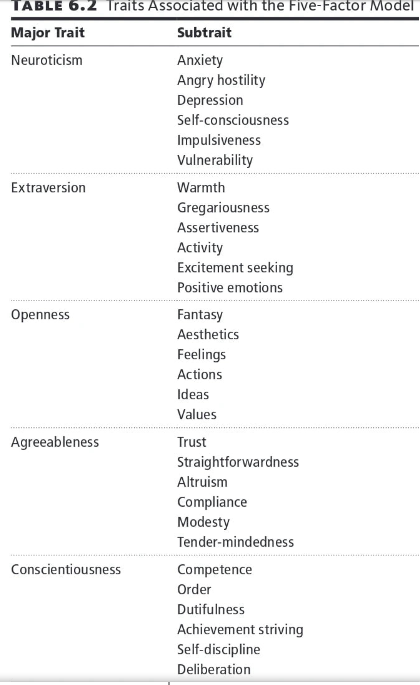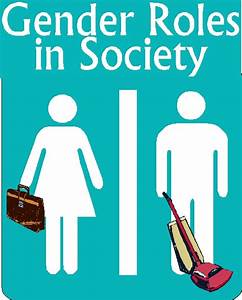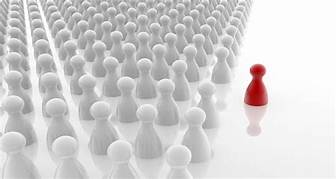Artifact 5
Archive Module 8

This archived item from module 8 provided the opportunity to explore the Five-Factor Model of personality. Through describing numerous life situations in it presented the ability to review each situation individually and determine which traits and sub-traits were on display. Whether they were our of character or not, at that particular point in time assessing which sub-traits were shown allowed for a better understanding of which sub-traits; anxiety, depression, warmth, positive emotions, fantasy, modesty, altruism, competence, values, dutifulness, etc., were associated with each of the 5 Major traits; neuroticism, extraversion, openness, agreeableness, and conscientiousness (Matsumoto & Juang, 2017). Also, the five-factor model and the five factor theory were becoming a bit blurred for me during the progression of the study of this particular subject. This assignment allowed me to distinguish that the five-factor model are the traits associated with the individual structure of personality while the five factor theory pertains to the source of the traits listed in the five-factor model (Matsumoto & Juang, 2017). This clarification between terms made this archive assignment stand out to me and develop a liking for it.
Sources:
Matsumoto, D.R., & Juang, L. (2017). Culture and Psychology (Sixth). Cengage Learning. https://ebooks.cenreader.com/#!/reader/b3e59046-b88b-4b61-b7b6-f21d6b270baf/page/70079d0b-34-ea-47ad-8b6a-3e25ae6646eae.
The included image shows a chart in the text from Matsumoto & Juang (2017) displaying the 5 major traits defined in the five factor model of personality and the sub-traits associated with each major trait. I feel that it helps to apply the information included in the artifact to the ability to distinguish between the five factor model and the five factor theory.
Artifact 4
Archive Module 5
This assignment included the task of answering a questionnaire pertaining to the difference in values between myself and my parents. This allowed me to apply the ideas of socialization and enculturation presented in the text by Matsumoto & Juang (2017) to my own personal experiences and determine which beliefs and values I hold are a product of the culture I grew up in as a child. Matsumoto & Juang (2017) describe people other than parents as being socialization agents, ensuring that cultural beliefs, values, and morals are learned. In the archive I note how the differences in the life experiences of my parents and myself account for the differences in our opinions pertaining to the questions answered in the assignment. I do believe this to be true; as a young adult, if I were to have taken the same questionnaire I believe that my opinions would have coincided more with those of my parents than the do now. Being an active duty spouse I have had the opportunity to experience many different cultures, where my parents have not; creating a difference of opinion based on exposure to different culture on both national and worldwide scale.
Sources:
Matsumoto, D.R., & Juang, L. (2017). Culture and Psychology (Sixth). Cengage Learning. https://ebooks.cenreader.com/#!/reader/b3e59046-b88b-4b61-b7b6-f21d6b270baf/page/70079d0b-34-ea-47ad-8b6a-3e25ae6646eae.
The representative image for Artifact 4 is an image of the questionnaire I answered to determine the differences between my parents opinions and my own. I chose to include this image because it helps to illustrate how there were differences in opinion, but they were not profound.
Artifact 3
Archive Module 9
This archive for module 9 explored differences in expected gender for specific occupations for myself and my spouse. I believe that our different cultural backgrounds; as well as, our own gender difference both played a part in our differences in expected gender for the different occupations listed. Experiences with people in these professions was also influential in our opinion; as a female I am more comfortable with a female doctor; whereas, my husband is more comfortable with a male. Our gender difference and personal preference lead us to have differing opinions on whether a Doctor would be male or female. Although my husband does have an Asian cultural background, he was raised in the United States which we have in common, and I feel is a major reason that of the 13 occupations listed, we only had 3 different gender expectancies based on occupation. It was interesting to explore how culture and sex can influence how we experience the world around us and how they affect our expectations and assumptions.

The above image represents the gender roles associated with each individual culture and how it influences expectations pertaining to occupation.
Artifact 2
Archive Module 4

For this activity it was required to utilize Hofstede’s (2021) website in order to compare multiple countries of personal interest and determine how they compare based on Hofstede’s 6 levels of cultural dimensions. These 6 dimensions include; power distance, individualism, masculinity, uncertainty, long-term orientation, and indulgence. Choosing to compare Greece, Ireland, the United States, and eventually Japan produced both expected and unexpected results. High scores of individualism were to be expected from the westernized cultures of ireland, Greece, and of course the United States. Surprisingly however Japan had higher levels of individualism than Greece which was a huge shock considering the collectivistic nature of Asian cultures. Japan scored high in long term orientation; a tendency to delay gratification ((Matsumoto & Juang, 2017). Which I learned later during the completion of the Assignment 5 research paper was due to cultural expectation of emotional regulation. Overall; a very informative Module assignment creating a further desire to explore the Japanese culture in depth due to its extensive difference when compared to American culture. Since I have visited Japan in the past, I enjoyed this assignment.
Sources:
Matsumoto, D.R., & Juang, L. (2017). Culture and Psychology (Sixth). Cengage Learning. https://ebooks.cenreader.com/#!/reader/b3e59046-b88b-4b61-b7b6-f21d6b270baf/page/70079d0b-34-ea-47ad-8b6a-3e25ae6646eae.
Hofstede Insights (2021). Compare Countries. https://www.hofstede-insights.com/product/compare-countries/
The included image represents the difference between collectivistic Asian cultures and Individualistic American culture. It provides a visual image of the difference in putting the group first instead of the individual self.
Artifact 1
Archive Module 13
I feel that this assignment for module 13 was my favorite because it allowed me to analyze a situation in my life that was fairly recent and determine the significance of physical health in relation to happiness. Through numerous moves and relocations associated with military life I found the most recent to be the hardest. Anxiety and depression led to decreased of feelings of happiness and physical activity. The big question in this exercise was whether happiness was dependent on physical exercise or the opposite was true. I believe the two to be interdependent. They both correlate in my own personal experience. In the past if either happiness or physical activity is low, then so is the other. Because the various systems of the body are interrelated and feed off of one another, I find it difficult to distinguish how happiness and physical activity cannot be connected.

This image represents how exercise and happiness are interrelated through a physiological connection.